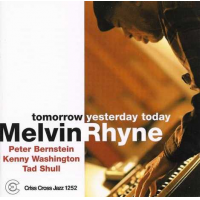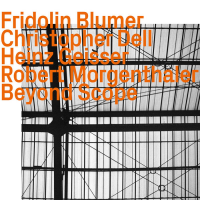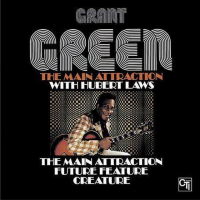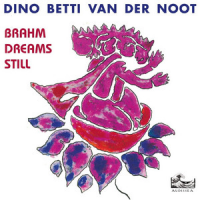Home » Jazz Articles » Liner Notes » Steve Davis: Systems Blue
Steve Davis: Systems Blue
At the ripe young age of 34, Davis has had his share of fortuitous knowledge-building opportunities. Coming in on the tail end of an era when he took part in the last edition of Art Blakey's Jazz Messengers in 1990, he would then join Jackie McLean's ensemble a few years later. As such, the trombonist had the chance to learn from two of the music's vital bandleaders and two men who were among the final purveyors of a period in jazz when prospects abounded for young musicians to get it together on the job.
Of course, Davis has done his homework, both in time spent with Jackie McLean and other mentors at the Hartt School of Music and in concentrated listening to the recorded legacy that any jazzman worth his weight must do. "It's probably no surprise that J.J. Johnson was the first trombonist I really heard when I started paying attention to jazz as a teenager. I also heard Curtis Fuller on some of the Jazz Messengers records like Ugetsu and a Lee Morgan record that I love called Tom Cat. Later, I discovered Slide Hampton on a great record with Jimmy Heath called Mad About Tadd."
Before long, a protracted list of influences would extend to names such as Steve Turre, Carl Fontana, Julian Priester, and Grachan Moncur III. "I love the legacy of the trombone, but have always wanted to phrase more like a trumpet or saxophone. J.J. certainly pioneered this approach playing with Bird, Dizzy and Bud. Curtis and Slide have extended most brilliantly on that concept."
Following his time spent as a student at Hartt, Davis would return as a faculty member in his own right. Before long, he would also become part of a thriving scene of talented up-and-comers who just happened to document their music for a variety of small independents including Criss Cross. Beginning with The Jaunt (Criss 1113) in 1996, Davis would initiate a distinctive series of recordings as a leader for the label, of which Systems Blue is the fifth overall. He has also been a contributing member of One For All, an ensemble of modern day messengers who manage to keep the hard bop flame alive.
Just days after One For All had finished up their first live recording for Criss Cross, now heard on Live at Smoke-Vol.1 (Criss 1211), Davis assembled his rhythm mates from that group to cut the disc you now hold in your hand. Of course, the rapport that
exists among these men dates back several years. "I think David Hazeltine is a profound musician. It's very rare to play with a pianist who accompanies with that acute a level of taste and harmony. His soloing is always impeccable." As for drummer Joe Farnsworth, Davis says, "Playing with Joe is a continuing inspiration. He plays with a combination of fire and ease and he always understands the inherent give and take in the music."
Rounding out our supporting cast is the ubiquitous Peter Washington and Davis sums it up succinctly when he says, "There are a lot of great bass players out there today, and then there's Peter and I think he's that special." Adding his pungent bop-inflected voice to a pair of tracks, alto saxophonist Mike DiRubbo has been featured on three previous Davis outings and can be heard at length on his own Keep Steppin' (Criss 1205). "I love playing with Mike. Our sounds seem to go together, naturally."
As talented a writer as Davis has become, his scores now showing up on a myriad of contemporary recordings, the obvious question here is what impulse led to the decision to opt for a program mainly of standards? As he explains it, "I've always included a few standards because there are just so many great songs to play. As much as I love to write, I felt like it was time to gather up some tunes I like to play and some that were new to me. Hopefully, we were able to lend an original quality to each of the songs."
Giving Surrey With the Fringe on Top a fresh new face was accomplished by inserting four bar phrases that extend the natural flow of the melody line, with Farnsworth filling in the extra space. "The original impetus was mine, but it was really a collective arrangement," Steve claims. Solos come from Davis and Hazeltine, with Farnsworth adding some musical banter over a vamp.
Ushered in by Farnsworth's hypnotic groove and a snippet of Yesterdays that Hazeltine utilizes for a vamp, the Davis original Spirit Waltz is based on a structure of sixteen bars of one tonal center, a further eight revolving around yet another tonal center, and then an eight bar turnaround. DiRubbo sits in on this one and there are solo statements from all except for Washington. "This tune is dedicated to a djembe player named Ra Atam who recently passed away," Steve says. "I met him years ago at the Artist's Collective in Hartford and learned a lot from him."
DiRubbo is back again for Systems Blue, tossing off some phrases during his extended stay that point towards John Coltrane as a major influence. Hazeltine later responds with some juicy block chords in Tynerish fashion. "We wanted a kind of long meter, wide-open sounding blues, almost like Bessie's Blues," explains Davis. "We've all recorded frequently at Systems II and the folks there are great to work with. Plus, I wrote the tune right there, hence the title."
Davis describes A Nightingale Sang in Berkeley Square as "just a beautiful song that I've always liked." He goes on to add, "I couldn't think of a well-known version of a trombonist recording that, so it seemed like a good idea." Davis paces himself well, using space as a vital ingredient in telling his story, at one point tipping his hat to Long Ago and Far Away via the briefest of quotes. Hazeltine's turn is also marked by a sense of economy in service of the tune.
If I Love Again moves along at a medium clip and offers solo space for all the hands on deck. "That's a melody that I always heard Dexter Gordon quote in his solos," Steve enthuses. "It's kind of a romantic old tune that not a lot of people play.'' The trombonist is up first; ending his final phrase in a shrewd way that then provides the incentive for Hazeltine's opening gambit. Washington next gets his say before Davis and Farnsworth exchange eight bar phrases.
"Whenever I ask Dave to make a date with me, he's got to arrange something for it, because it'll be so good that I can't wait to play it!" As a result, it's Hazeltine's arrangement of Who Can I Turn To? that transforms the tune into a peppery bossa. There's also a cheery upturned tag that he inserts at various spots in the form, with Davis and the pianist contributing some mature statements to boot.
Another chestnut that has been done by scores of instrumentalists, not to mention a distinguished cast of vocalists that range from Frank Sinatra to Brazilian chanteuse Joyce, Speak Low is a straightforward swinger with room to stretch for Davis and Hazeltine. In a similarly unpretentious manner, the quartet approaches Namely You. After the head, Davis resists the temptation to switch to 4/4 right away, preferring to build the intensity before kicking up the tempo. Hazeltine's solo is marked by some intriguing single note runs in the lower register and Washington has a short stay before handing things back to Davis.
A bit of fortuitous luck brought forth Steve and Peter's duo performance of the resourceful Thad Jones composition Three and One. As Davis tells it, "I wanted Peter to play the melody with me, but with the full quartet. While he and I rehearsed the line, Joe and Dave were having some sandwiches or something. So, we just played a duet."
The Hazeltine arrangement of My Old Flame, which closes out the program, has a long history dating back to an erstwhile demo tape cut by One For All and more recent versions by the pianist himself. Well-placed hits punctuate the melody in a sagacious manner, with the tempo sending things flying into the stratosphere. "The whole band was challenging each other to see how humanly fast we could play it -and I did the best I could." With a hint of wisdom, Steve further adds, "You know trying to play those kind of tempos and make sense is a challenge."
"I listen to a lot of piano trio recordings. Hank Jones, Tommy Flanagan and Cedar Walton are three of my all-time favorite musicians. With those guys, everything is so clear. There are no wasted notes. So, for this date, I guess they all were in the back of my mind while trying to blend in with that great tradition." Of course, Davis is already part of a new tradition and a movement that in years hence will surely be looked upon with similar admiration by a succeeding generation of youngsters.
Liner Notes copyright © 2026 C. Andrew Hovan.
Systems Blue can be purchased here.
Contact C. Andrew Hovan at All About Jazz.
An avid audiophile and music collector, Chris Hovan is a Cleveland-based writer / photographer / musician.
Track Listing
Surrey With The Fringe On Top; Spirit Waltz; Systems Blue; A Nightingale Sang In Berleley Square; If I Love Again; Who Can I Turn To; Speak Low; 8. Namely You; Three and One; My Old Flame.
Personnel
Steve Davis
tromboneMike DiRubbo
saxophone, altoDavid Hazeltine
pianoPeter Washington
bassJoe Farnsworth
drumsAlbum information
Title: Systems Blue | Year Released: 2002 | Record Label: Criss Cross
Tags
PREVIOUS / NEXT
Support All About Jazz
 All About Jazz has been a pillar of jazz since 1995, championing it as an art form and, more importantly, supporting the musicians who make it. Our enduring commitment has made "AAJ" one of the most culturally important websites of its kind, read by hundreds of thousands of fans, musicians and industry figures every month.
All About Jazz has been a pillar of jazz since 1995, championing it as an art form and, more importantly, supporting the musicians who make it. Our enduring commitment has made "AAJ" one of the most culturally important websites of its kind, read by hundreds of thousands of fans, musicians and industry figures every month.

























